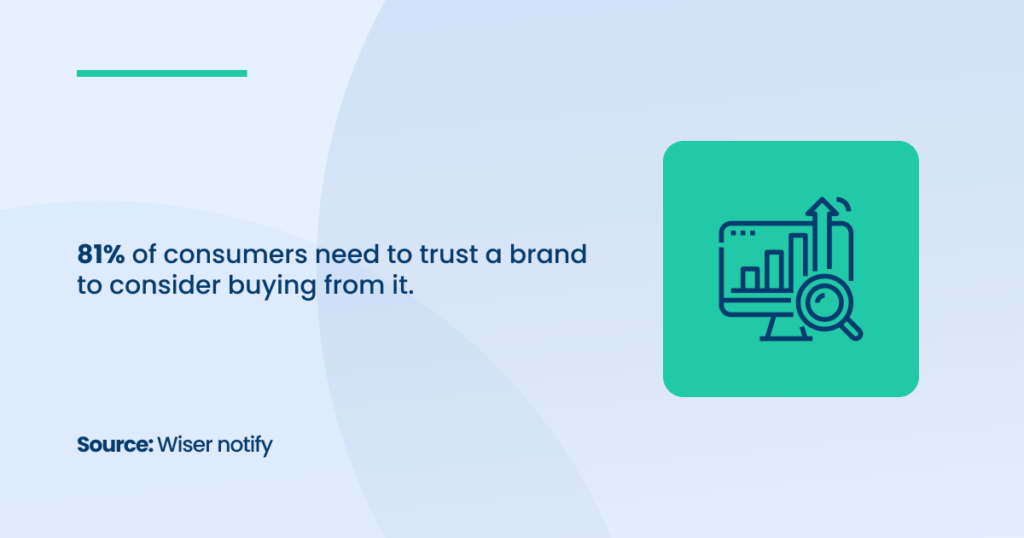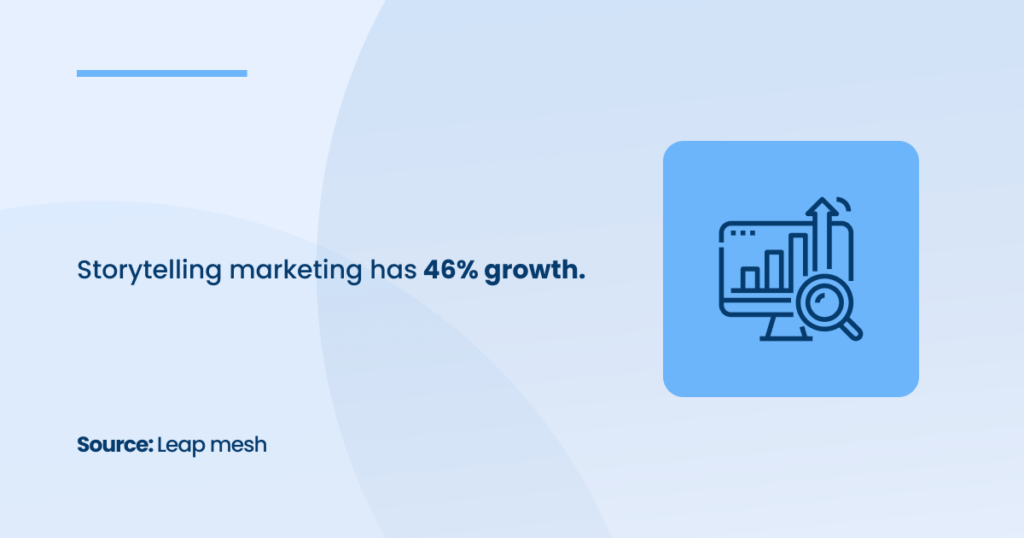Have you ever wondered why some brands lead the pack while others fade into the background?
Accept it or not, not all brands are created equal. Some brands capture attention effortlessly, commanding trust and loyalty, while others quietly fade into the background.
Why does this happen? It all boils down to one thing: brand authority.

Moreover, most companies spend 10-20% of their marketing budgets on branding and rebranding. The statistics show that brands with strong authority and consistent branding efforts see a significant return on investment.
Here comes the question. Who could be beneficial for the process?
An expert Thought Leadership Agency steps in as a strategic partner to craft compelling narratives, establish credibility, and foster trust with its target audience.
Let’s explore how building brand authority from creating a powerful first impression to fostering long-term loyalty.
1. Master the Art of Consistency: The Foundation of Authority
Building brand authority doesn’t happen overnight, and it certainly doesn’t happen without consistency.
Think of your brand as a symphony; each instrument (or touchpoint) must play harmoniously to create a memorable melody.
Why is Consistency Critical for Building Brand Authority?
Consistency builds trust.
A cohesive message reassures your audience that your brand is reliable, credible, and professional.
Source: Edelman Report
Inconsistent messaging, however, erodes trust. A misaligned tone or contradictory visuals can lead to a disconnect, leaving your audience questioning your authenticity.
For business owners and CEOs, consistency isn’t just a “nice to have”—it’s a strategic brand positioning tool.
Whether you’re sharing a product update, publishing a blog, or engaging in thought leadership strategies, your brand must feel the same everywhere. This unity fosters familiarity, which is the first step to loyalty.
Are You Speaking the Same Language Everywhere?
Your brand communicates across multiple channels—social media, websites, press releases, and even customer emails.
But here’s the question: Does your audience hear the same voice across them all?
How Inconsistency Harms Your Brand Authority
Imagine your brand uses a witty, casual tone on Instagram but comes across as overly formal on LinkedIn. Or, perhaps, your visual identity on your website doesn’t match your product packaging.
These discrepancies create confusion.
In fact, 90% of consumers expect their brand experience to be consistent across all platforms. When they don’t find alignment, trust diminishes, and so does engagement.
For example, Apple is a master of brand storytelling. Whether you see a minimalist billboard, watch a product launch, or browse their website, it all feels unmistakably “Apple.” That level of cohesion is not accidental—it’s a deliberate brand authority strategy.
2. Become the Go-To Expert: Establishing Thought Leadership
When it comes to building brand authority, trust is the cornerstone.
Your audience should see you as the go-to expert, someone who has the answers to their most pressing questions. The fastest way to gain that trust? Prove your expertise through content.
The Power of Content Marketing in Demonstrating Expertise
Content marketing is more than just blogging. It’s about creating high-value, audience-specific resources that position your brand as a leader. Why does this matter?
Content marketing generates three times as many leads as traditional marketing, costing 62% less.
Source: Forbes Advisor
More importantly, consistent, well-targeted content builds credibility over time.
Why Content Marketing is a Game-Changer for CEOs and Business Owners
- Build Trust: Answering your audience’s key questions demonstrates your understanding of their pain points. Trust grows when you solve their problems before they even ask.
- Drive Visibility: Publishing helpful content increases your visibility on search engines—a critical component of thought leadership and SEO.
- Position Your Brand: Strategic content solidifies your position as an authority, making you the first name that comes to mind when customers need solutions.
How to Choose the One Thing You Want to Be Known For
Let’s be honest: You can’t be an expert in everything 🙂
To build trust and authority, focus on one specific area. The key is identifying your niche and sticking to it.
3. Humanize Your Brand: Stories, Not Sales Pitches
Brands that connect emotionally stand out.
People don’t just buy products—they buy the story behind them.
A well-crafted narrative transforms your brand from a faceless entity into a relatable, trustworthy partner.
The first step in humanizing your brand is understanding what you stand for. Your mission and values aren’t just corporate jargon—they’re the backbone of your identity.
When clearly communicated, they provide a compass for your storytelling efforts, helping you resonate with your audience.
Why Mission and Values Matter
- Build Trust: Customers are more likely to engage with brands that align with their beliefs. According to Edelman’s Trust Barometer, 88% of consumers say trust is the deciding factor when choosing a brand.
- Create Emotional Ties: Highlighting your mission and values taps into your audience’s emotions, fostering loyalty beyond transactions.
- Reinforce Authority: A strong mission signals confidence and expertise, which are key components of building brand authority.
How Storytelling Fosters Emotional Connections
Facts tell, but stories sell. Why? Because stories activate emotions, and emotions drive decisions.

Research by the Harvard Business Review reveals that emotionally connected customers have a 52% higher lifetime value than those who are simply satisfied.
The Role of Storytelling in Brand Authority Strategies
- Personalizes Your Brand: Stories give your business a human touch, making it relatable.
- Engages Your Audience: A compelling narrative grabs attention and keeps people invested.
- Differentiates You from Competitors: While others push sales, your story pushes meaning and values.
4. Visibility is Credibility: Be Where Your Audience Is
Positioning yourself as a thought leader means stepping beyond your own platform.
Guest blogging, podcasting, and public speaking are powerful brand authority strategies that allow you to share your expertise with new audiences.
The Power of Guest Blogging
Guest blogging isn’t just about backlinks—it’s about sharing insights with a wider audience and demonstrating thought leadership.
According to a study, 70% of consumers prefer getting to know a company through articles rather than ads.
- What to Write About: Choose topics that showcase your expertise while solving common industry pain points. For example, if you’re a CEO of a SaaS company, write about strategic brand positioning or thought leadership strategies.
- Where to Publish: Target reputable industry blogs or platforms like Forbes, Entrepreneur, or niche-specific sites.
Podcasting: Sharing Your Voice
Podcasts have exploded in popularity, with over 464.7 million listeners globally.
Source: BuzzSprout
This medium allows you to connect with audiences on a personal level, sharing your knowledge in an engaging, conversational format.
- Guest Appearances: Start by appearing on podcasts relevant to your niche. Discuss your journey, expertise, and unique insights.
- Hosting Your Podcast: Once you’ve gained confidence, create your own podcast. Use it to feature interviews with industry leaders, discuss trends, and build a loyal following.
Speaking at Events
Public speaking remains one of the most impactful ways to establish authority.
Whether it’s a local workshop or a global conference, events provide a stage to showcase your thought leadership skills.
- Benefits of Speaking Engagements: Build credibility, generate leads, and expand your network.
- Topics to Cover: Focus on pressing industry challenges, such as why thought leadership is important or how digital PR strategies can transform businesses.
5. Data-Driven Decision Making: Authority Rooted in Metrics
Data doesn’t lie.
Source: Fortune Business Insights
Building brand authority is no longer about simply having a great product or service. In today’s data-driven world, the real power lies in proving your value with hard evidence.
Why Metrics Matter in Building Brand Authority
Metrics aren’t just numbers on a dashboard—they’re the story behind your brand’s performance.
CEOs and business owners must understand that data-backed decisions build trust and credibility. In a world where consumers are bombarded with information, brands that prove their claims with evidence rise above the noise.
Key Benefits of Data-Driven Decisions
- Track Brand Perception
Analytics help you understand how your audience perceives your brand. Are you seen as a thought leader, a reliable source, or just another player in the market? Tools like Google Analytics and brand sentiment trackers can provide insights into this.
- Measure the Impact of Your Content
Publishing types of thought leadership content like blogs, whitepapers, or webinars? Data can reveal which content resonates most with your audience and why.
- Justify Investments in Branding Efforts
Show stakeholders and team members that your branding strategies are delivering ROI by sharing key performance indicators (KPIs).
The Role of Analytics in Tracking Brand Perception
Analytics provide a window into your brand’s reputation and visibility.
1. Understanding Audience Engagement
- Metrics like bounce rate, session duration, and returning visitors show how well your website engages its audience.
- For example, if visitors spend an average of 3 minutes on your page, it’s a sign they find your brand storytelling techniques captivating.
2. Monitoring Social Media Conversations
- Social listening tools like Hootsuite or Brand24 help track mentions of your brand, giving you insights into public sentiment.
- Pro Tip: Monitor mentions of your competitors to identify gaps you can fill.
3. Evaluating SEO Performance
- Use tools like SEMrush and Ahrefs to track how your content ranks for targeted keywords. For instance, if you aim to lead in “thought leadership best practices,” these tools can show your current rankings and competition.
Your Move to the Front of the Pack
Building brand authority isn’t just about making noise. It’s about making an impact that resonates long after the first interaction. [A] Growth Agency will partner with you.
Our experienced team specializes in turning entrepreneurial dreams into reality with effective, tailored growth strategies.
Remember, Growth is our driving force. We believe in the power of data to inform and drive every strategy, ensuring our actions are as effective as they are innovative.
Building brand authority is more than a tactic—it’s the foundation of sustainable growth.

